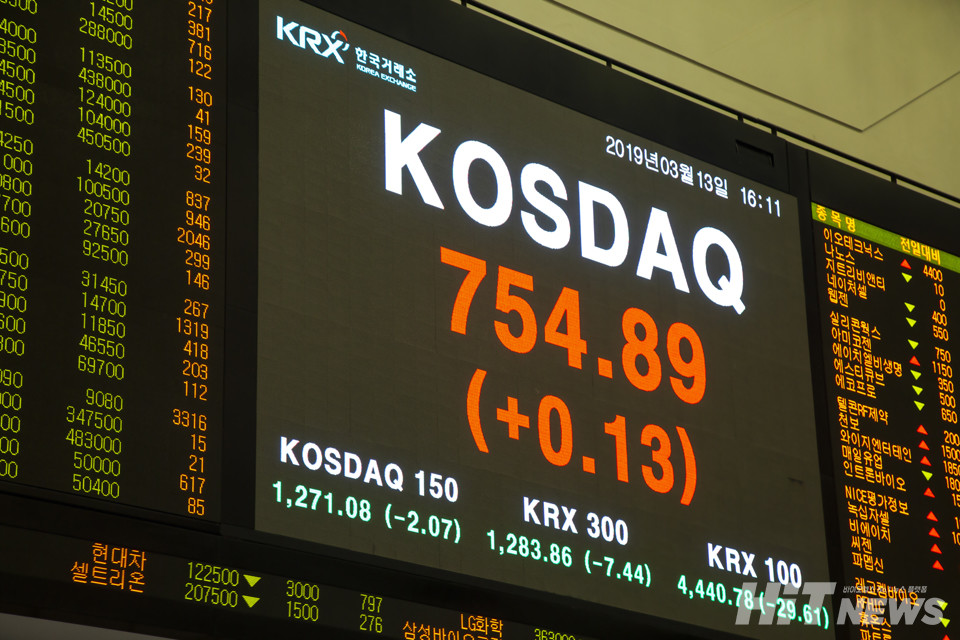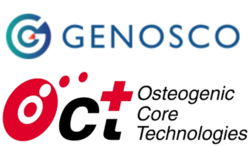Korea Exchange Flags “Duplicate Listing,” Prompting Broader Reckoning in Biotech IPO Standards

The Korea Exchange has denied Genosco’s KOSDAQ listing, citing an indistinguishable revenue model and business structure shared with parent company Oscotec. Widely recognized as the co-developer of the anticancer drug Leclaza (lazertinib), Genosco now faces intense scrutiny—not for its technology, but for its governance. The decision is being interpreted as a firm response to mounting concerns over structural integrity in biotech IPOs.
On April 11, the Exchange informed Genosco that its preliminary review for a technology-based special listing had been rejected. The Listing Committee stated, “Oscotec and Genosco co-developed lazertinib and share royalty revenues under an identical structure. The two companies lack independent business models and revenue sources.”

Genosco’s application, submitted in October last year, had been under review for approximately six months. With the listing rejected, the company is now re-evaluating its next steps. A company official stated, “We plan to hold a management meeting soon to determine whether to request a re-review from the KOSDAQ Market Committee.”
Revenue-Sharing Structure Central to Listing Denial
Genosco and Oscotec jointly developed the compound behind lazertinib. In 2015, the compound was licensed to Yuhan Corporation, which out-licensed it to Johnson & Johnson (J&J) in 2018. The drug has since received FDA approval, positioning Genosco and Oscotec as leading developers of a global anticancer therapy.
However, the Exchange focused on the 40% royalty paid by J&J, which is evenly split between the two companies—making their business models and financial structures indistinct. Despite Genosco’s R&D capabilities, the structural overlap in revenue became the decisive factor in the rejection.
Governance Turmoil and Shareholder Backlash
Oscotec pursued Genosco’s listing to diversify its revenue sources and secure independent funding, with Genosco aiming to raise up to $70 million. Since Oscotec was incurring losses, it could not financially support its subsidiary, and the IPO was seen as a means of achieving both financial autonomy and risk separation.
Proponents argued the listing would help reflect Oscotec’s true valuation by offloading single-pipeline risk to new investors. However, minority shareholders viewed the IPO as a threat—potentially diluting their shares and serving as an exit strategy for majority stakeholders. They criticized it as “double compensation” for value already embedded in Oscotec’s shares.
Tensions culminated at Oscotec’s March general meeting, where over 40% of minority shareholders voted against the reappointment of CEO Jeong-Geun Kim. The conflict had escalated from an IPO dispute into a governance crisis.
Korea Exchange Draws a Line: No More Structural Loopholes
This rejection goes beyond technical eligibility; it signals the Exchange’s intent to curb perceived exploitation of listing systems. A rising trend—particularly in biotech—has seen parent firms spin off subsidiaries with shared core assets for separate IPOs, sometimes with minimal structural differentiation.
In contrast, successful cases such as Oncocross Therapeutics (Jeil Pharmaceutical) and ImmuneOncia (a Yuhan spin-off) showcased clearly separated pipelines and governance. These examples underscored the viability of spin-off listings when done with transparency and independence.
A capital markets expert commented, “Genosco lacked separation in revenue, governance, and pipeline. It was structurally bound to fail. Cases like this only deepen skepticism toward biotech IPOs.”
Following the announcement, a senior reviewer noted, “The Exchange explicitly referred to this as a ‘duplicate listing.’ The chances of overturning the decision on re-evaluation are slim. This wasn’t just a poor listing strategy—it was a fundamental failure in investor trust and market readiness.”
Another reviewer added, “Genosco’s technology wasn’t the issue. But without a distinct governance and business model, IPO funding is off the table. More drastic measures—like a merger, equity swap, or structural realignment with Oscotec—must be considered. This isn’t just an internal matter anymore; it involves employee stock plans, succession, and spin-off legitimacy.”
Still, experts hope the decision won’t deter legitimate biotech listings. “With strong precedents like Oncocross and ImmuneOncia, the path is still open for structurally sound spin-offs.”
Genosco Rejection Signals Stricter IPO Standards in Biotech
The Genosco case marks a turning point in IPO evaluations—where business independence and revenue clarity outweigh pipeline potential. Superficial spin-offs no longer suffice. Only companies with demonstrable operational separation will earn investor confidence.
This is more than a failed IPO. It forces the entire biotech sector to confront questions of transparency, governance, and structural integrity. For Genosco and Oscotec, the challenge now is not just recovery—but redefinition.

